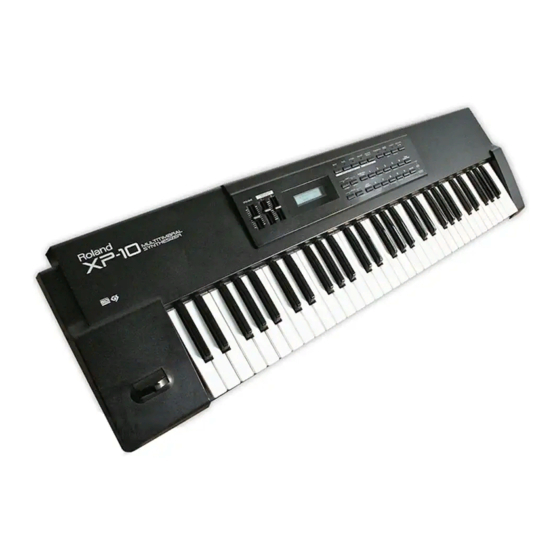
User Manuals: Roland XP-10 Multitimbral Synthesizer
Manuals and User Guides for Roland XP-10 Multitimbral Synthesizer. We have 3 Roland XP-10 Multitimbral Synthesizer manuals available for free PDF download: Owner's Manual, Service Notes
Roland XP-10 Owner's Manual (98 pages)
MULTITIMARAL SYNTHESIZER
Brand: Roland
|
Category: Synthesizer
|
Size: 6 MB
Table of Contents
Advertisement
Roland XP-10 Owner's Manual (99 pages)
multitimbral synthesizer
Brand: Roland
|
Category: Synthesizer
|
Size: 5 MB
Table of Contents
Roland XP-10 Service Notes (17 pages)
Multitimbral
Brand: Roland
|
Category: Synthesizer
|
Size: 5 MB
Advertisement


